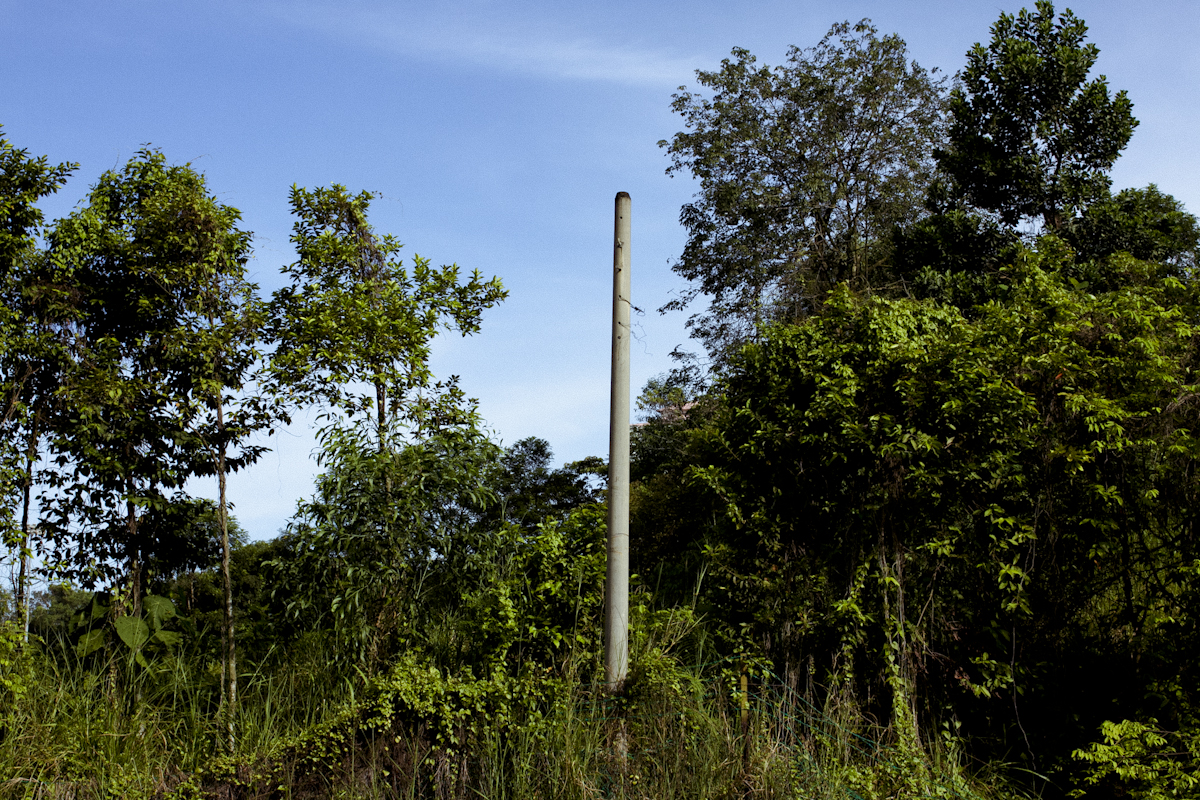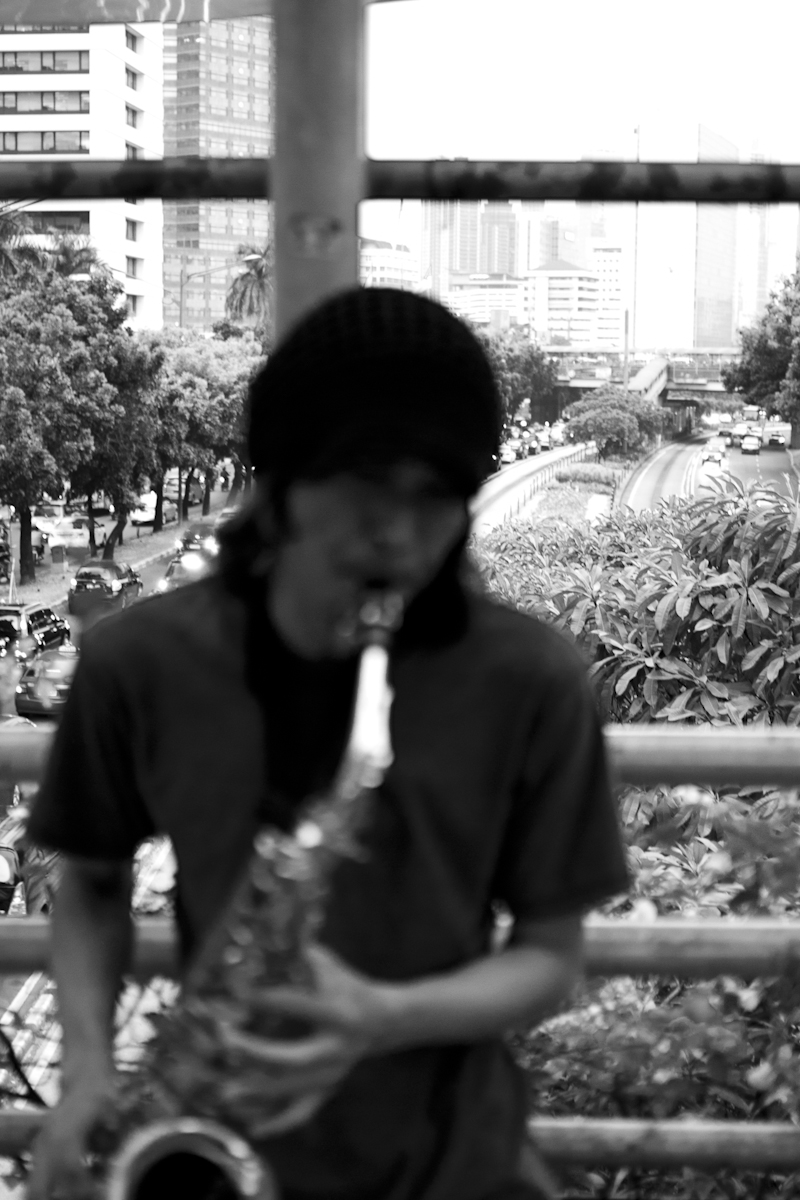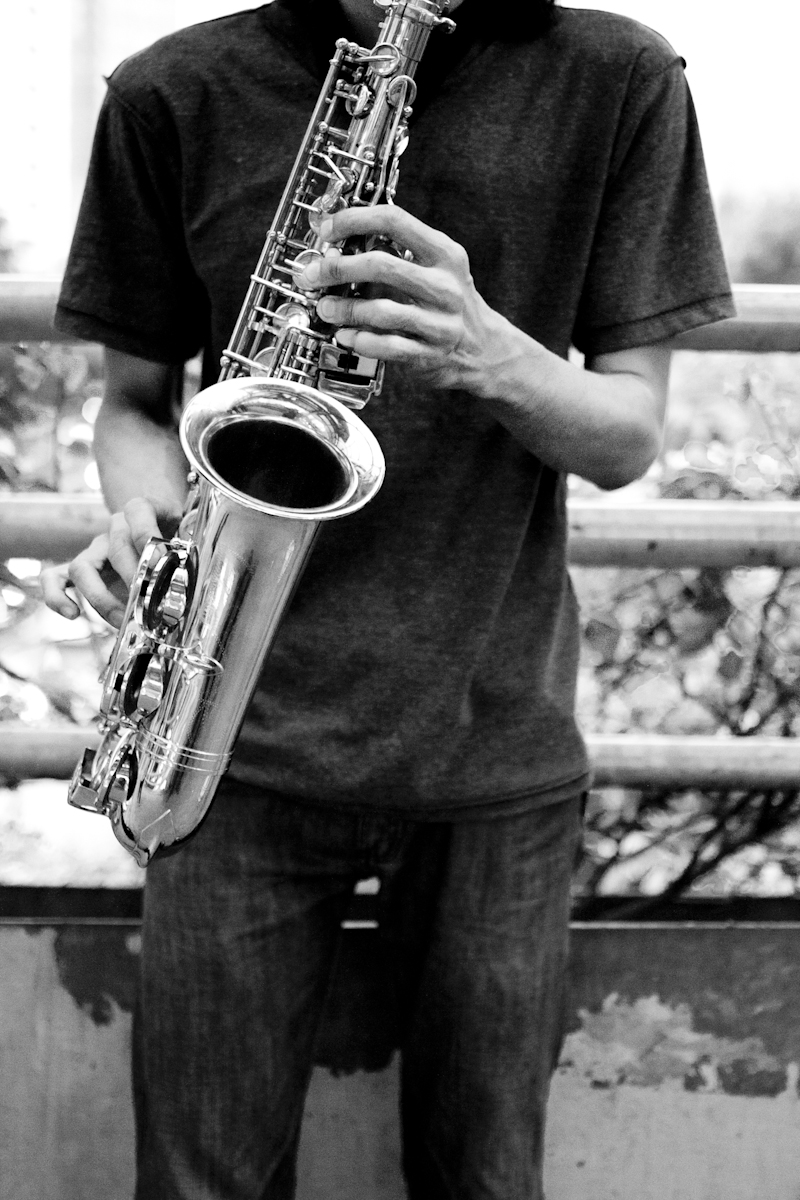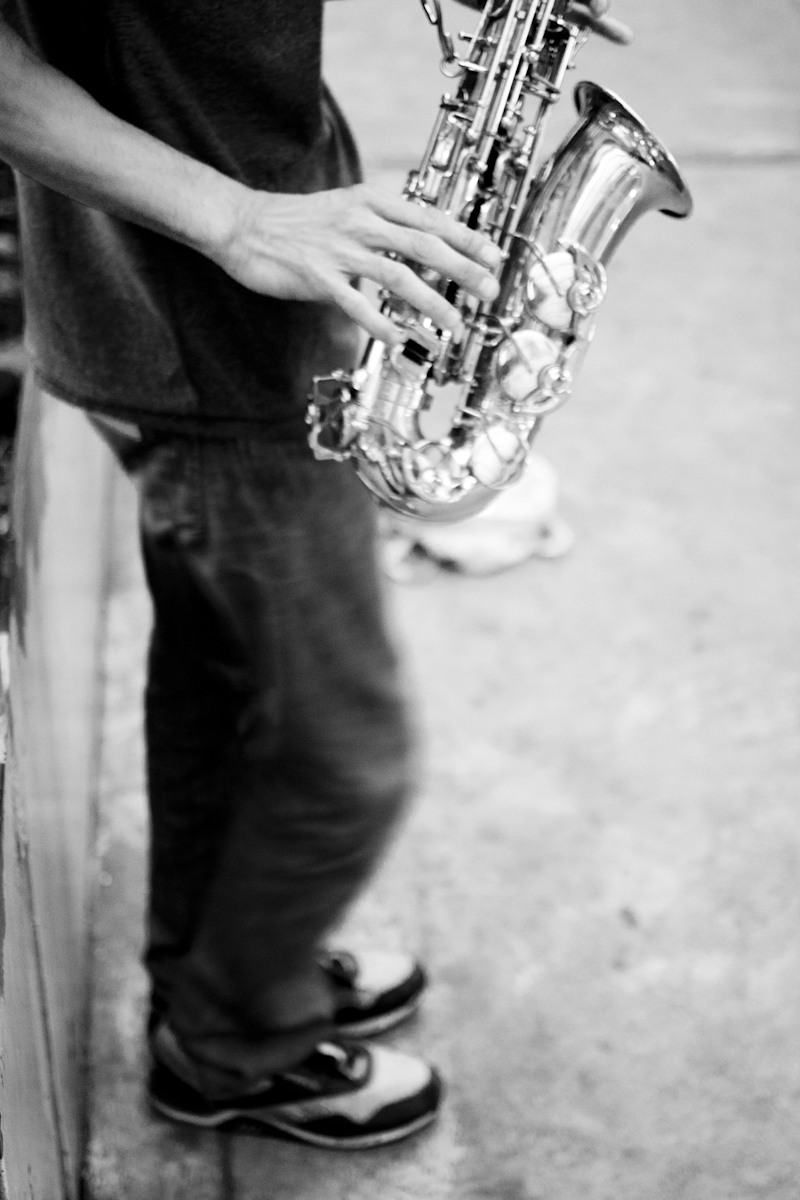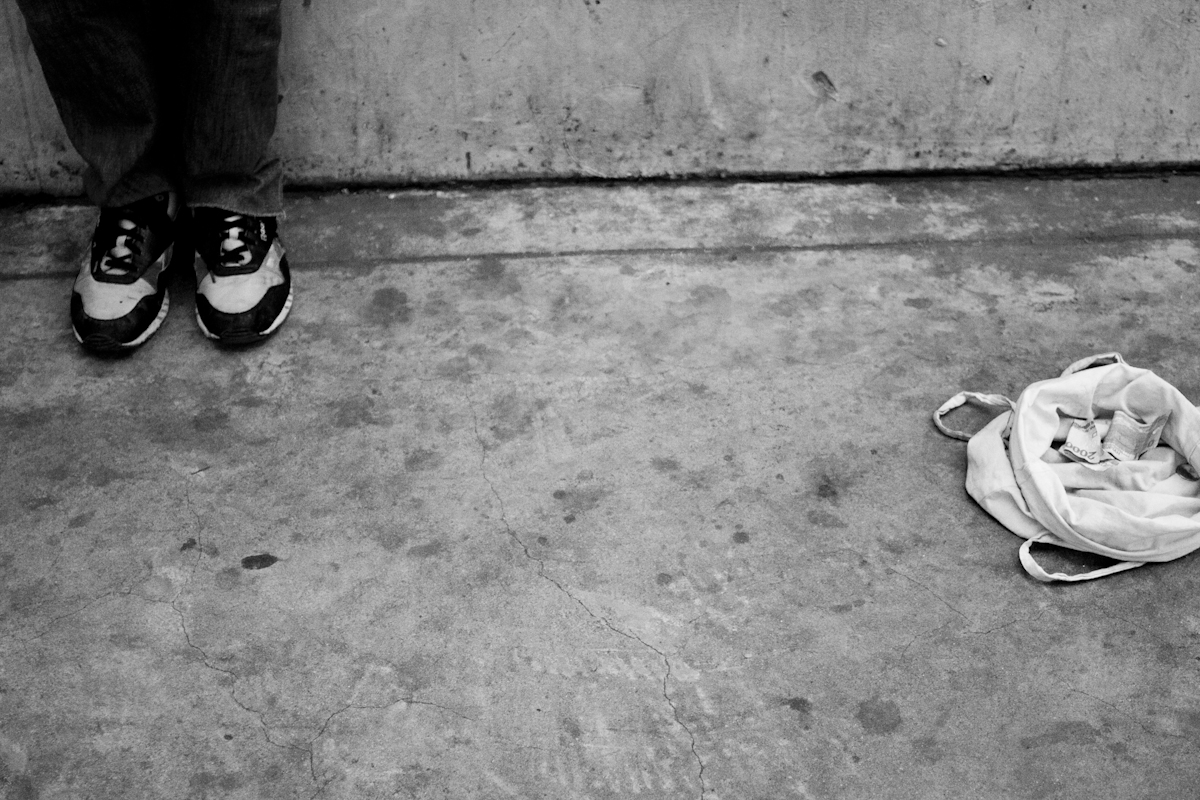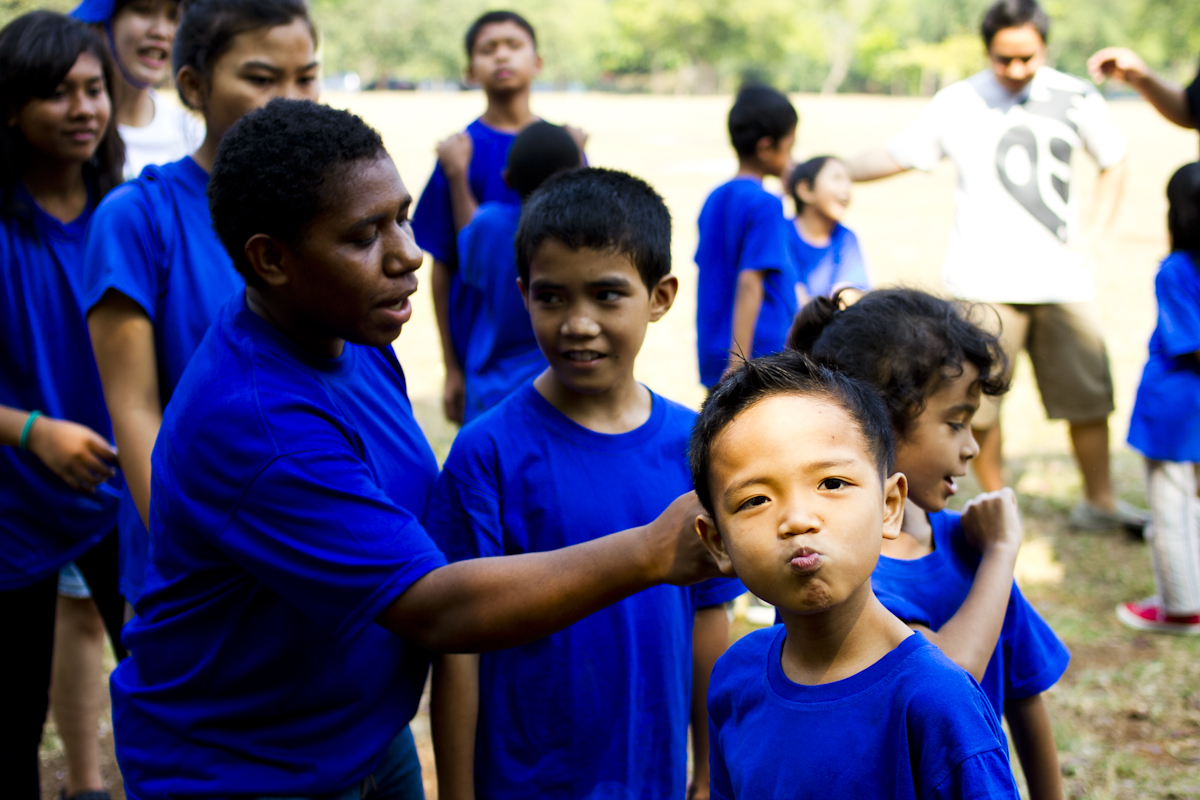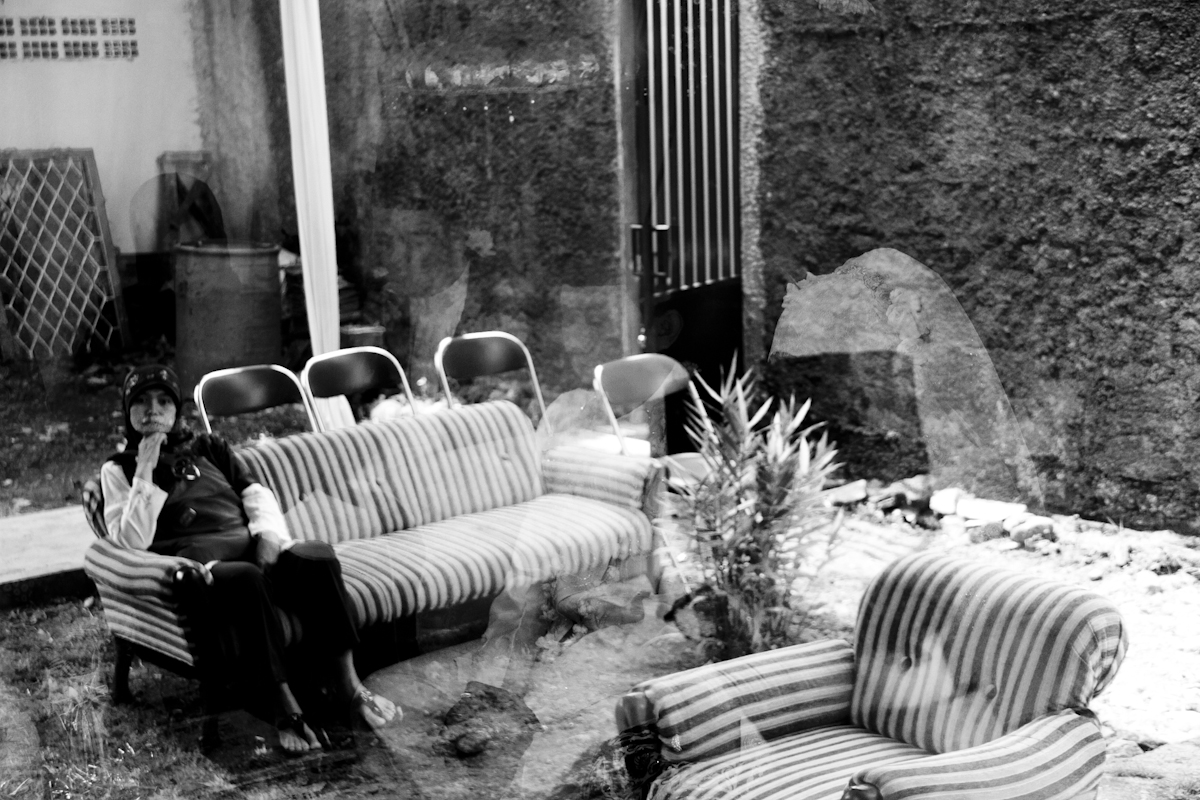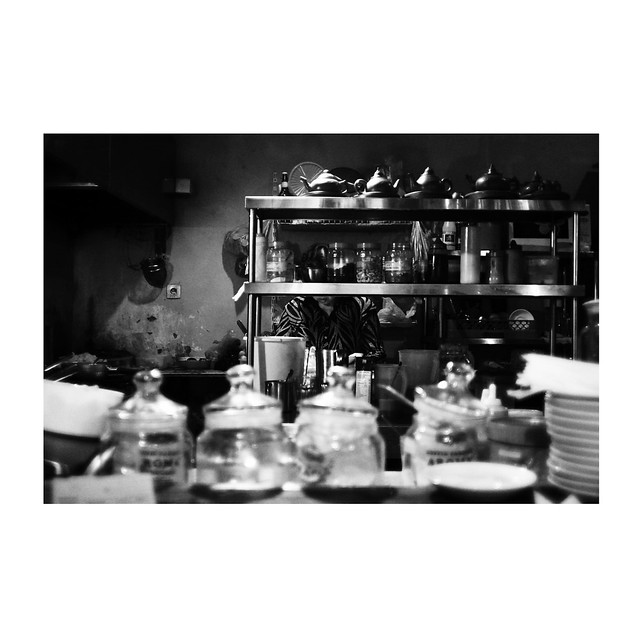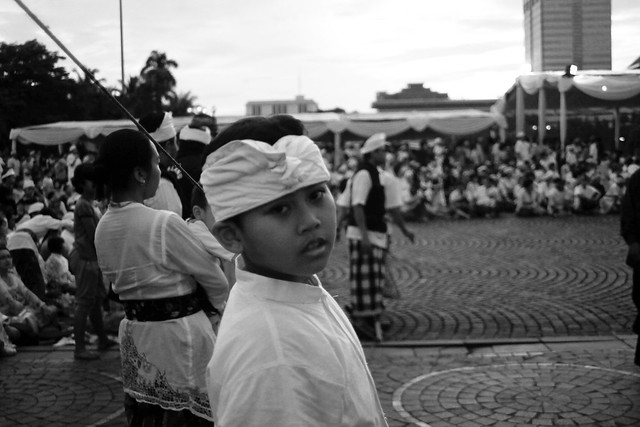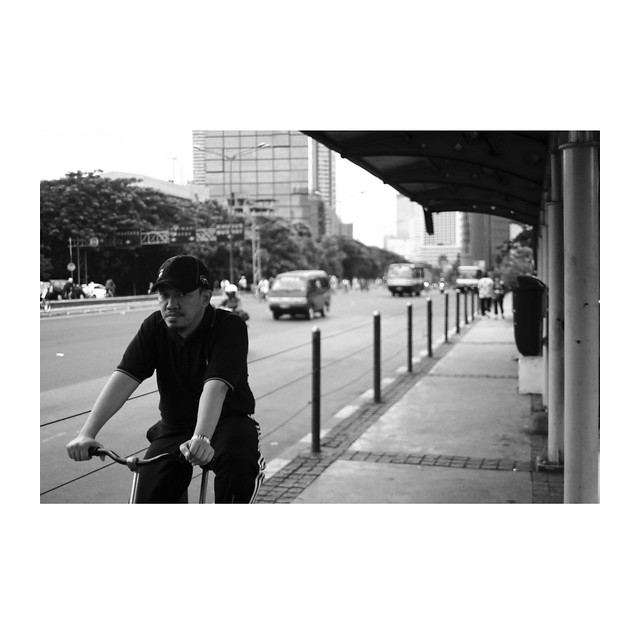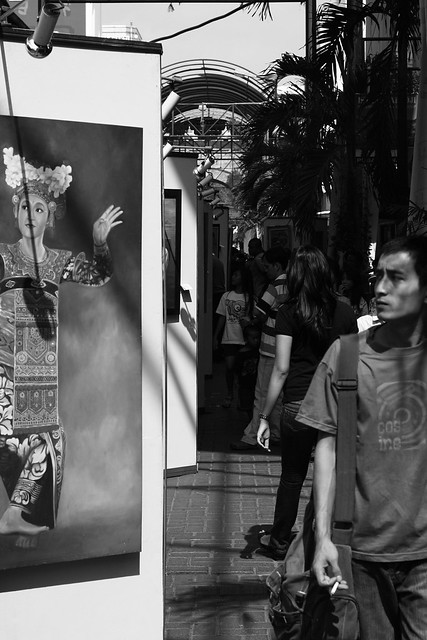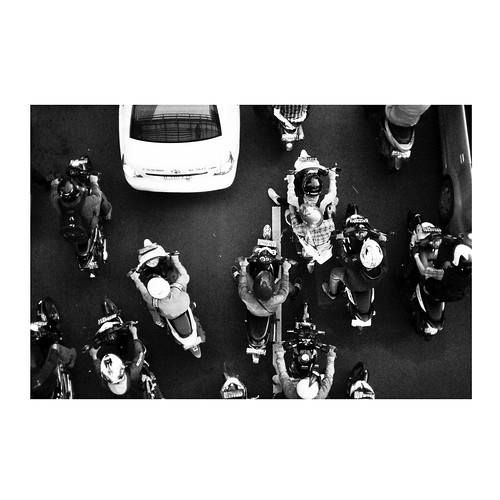“Menurut saya karya fotografi ini menarik sekali”
Kata-kata diatas adalah salah satu komentar yang terlalu sering saya dengar tentang sebuah karya fotografi, entah itu suatu dalam sebuah diskusi, seminar atau hanya obrolan-obrolan iseng. Syukur kalau setelah kata itu diucapkan si pemberi komentar dapat menjelaskan lebih lanjut mengenai kenapa karya foto tersebut menjadi menarik. Sialnya kebanyakan komentator berhenti sampai di sana saja. “Menarik” memang mungkin bukan kata yang salah, namun “menarik” juga tidak menjelaskan lebih banyak. Kata-kata serupa “menarik” yang sering kita jumpai di percakapan sehari-hari adalah “baik” dan “gitu”.
Sebagai contoh:
“Bagaimana gebetanmu yang itu?”
“yah orangnya baik kok”
atau
“Gitu maksud gw, paham kan?”
“he em”.
Kata seperti “menarik’ atau “baik” atau “gitu” memiliki suatu kelemahan karena belum tentu yang dimaksud oleh si pembicara sama dengan makna yang ditangkap oleh si pendengar.
Kembali ke pokok bahasan, ada beberapa hal yang menjadikan “menarik” sebagai kata pilihan untuk menjelaskan sebuah karya. Yang pertama adalah kurangnya kemampuan seorang fotografer untuk keluar dari dunia fotografi, padahal kemajuan teknologi memberikan akses bagi para fotografer untuk mendapatkan berbagai inspirasi dan informasi. Seringkali yang terjadi adalah para fotografer mencari inspirasi dalam bentuk sebuah foto pula. Karya-karya milik Cartier-Bresson, Trent Parke atau Alex Webb misalnya menjadi salah satu acuan favorit untuk membuat karya street photography. Padahal seorang fotografer seharusnya mampu dan mau untuk mendapatkan inspirasi dari berbagai karya yang lain seperti seni sastra, seni lukis, tarian atau novel-novel fiksi. Sesuatu yang berada di luar internet. Kurangnya inspirasi dalam bentuk lain ini, menurut saya membuat seseorang memiliki perbendaharaan kata yang sedikit.
Yang kedua, kata menarik menjadi pilihan utama karena kata itulah yang dipopulerkan menjadi standar umum kritik fotografi amatir. Bagi beberapa orang yang menyimak berbagai karya fotografi yang berseliweran di internet, kata ini akan sangat mudah dibaca berulang-ulang di kolom komentar. Sebagai sebuah kata “menarik” adalah kata yang aman, ia tidak baik dan tidak pula buruk dan sebagai kata yang aman ia mengurangi resiko dibully jika anda salah kritik.
Pada tulisan ini saya tidak hanya akan meminta anda membaca Murakami atau Kundera atau mendengarkan Beethoven lalu dilanjutkan The Raveonettes untuk mendapatkan inspirasi. Saya juga akan memberikan dua tawaran untuk memperluas ruang argumen, karena menurut saya kata “menarik” membuat kita malas untuk mengeluarkan argumen. Dua tawaran itu datang dalam bentuk kata yaitu kontekstual dan relevan.
Sebuah karya fotografi menjadi kontekstual jika ia mampu menjelaskan atau dijelaskan (oleh) kondisi zaman ketika si fotografer mengambil gambarnya atau pada di masa depan. Sebagai contoh, karya The Americans oleh Robert Frank adalah karya yang pada awalnya kontekstual untuk oleh publik Eropa, karena gaya fotografinya yang sangat candid sehingga menghasilkan foto yang — menurut majalah Popular Photography — meaningless blur, grain, muddy exposures, drunken horizons and general sloppiness. Gaya fotografi yang sama tidak diterima dengan baik oleh publik Amerika Serikat, karena mereka terbiasa dengan karya-karya dari Walker Evans yang sangat jelas dalam menggambarkan foto. Salah satu faktor yang mendukung publik Amerika Serikat untuk menyadari konteks The Americans adalah karena tulisan pengantar yang dibuat oleh Jack Kerouac. Dimana foto-foto milik Frank dianggap dapat mewakili karya sastra beat generation yang populer (dan kontekstual) pada saat itu.
Relevansi di lain hal, adalah ukuran untuk menilai seberapa pentingnya sebuah karya fotografi itu pada audiens yang dituju. Audiens ini adalah mereka yang mengamati fotografi; baik galeri, kurator, media, masyarakat umum atau kelompok tertentu. Sebagai sebuah karya yang lahir dari pemikiran yang subyektif, fotografi terkadang hanya menjadi relevan bagi si fotografer dan tidak bagi orang lain. Karena itu seorang fotografer yang ingin menyampaikan idenya harus awas dan sadar apakah karyanya tersebut relevan bagi audiensnya.
Sebagai contoh untuk ukuran Indonesia, dimana karya-karya yang beredar adalah karya-karya yang menonjolkan keindahan (baik model berbaju minim, maupun pemandangan alam bebas) sebuah karya yang mengeksplorasi sisi personal adalah karya yang menjadi langka. Karya seperti ini menjadi relevan karena ia memberikan sesuatu yang baru dan memberikan alternatif untuk memandang fotografi. Tentu karya-karya fotografi sebagai ekspresi personal sudah beredar luas di luar sana, namun ketika kita bicara tentang publik Indonesia karya seperti ini menjadi relevan karena sebagian besar orang awam akan hal tersebut.
Sekian saja tawaran dari saya, mudah-mudahan tawaran ini dapat membuat diskusi tentang fotografi (baik karya maupun pemikiran) berlanjut dan tidak berhenti dengan komentar menarik, kontekstual atau relevan. Saya juga harap tulisan ini dapat ditanggapi dan tidak berhenti dengan komentar “Wah menarik sekali tulisanmu Ki!”
